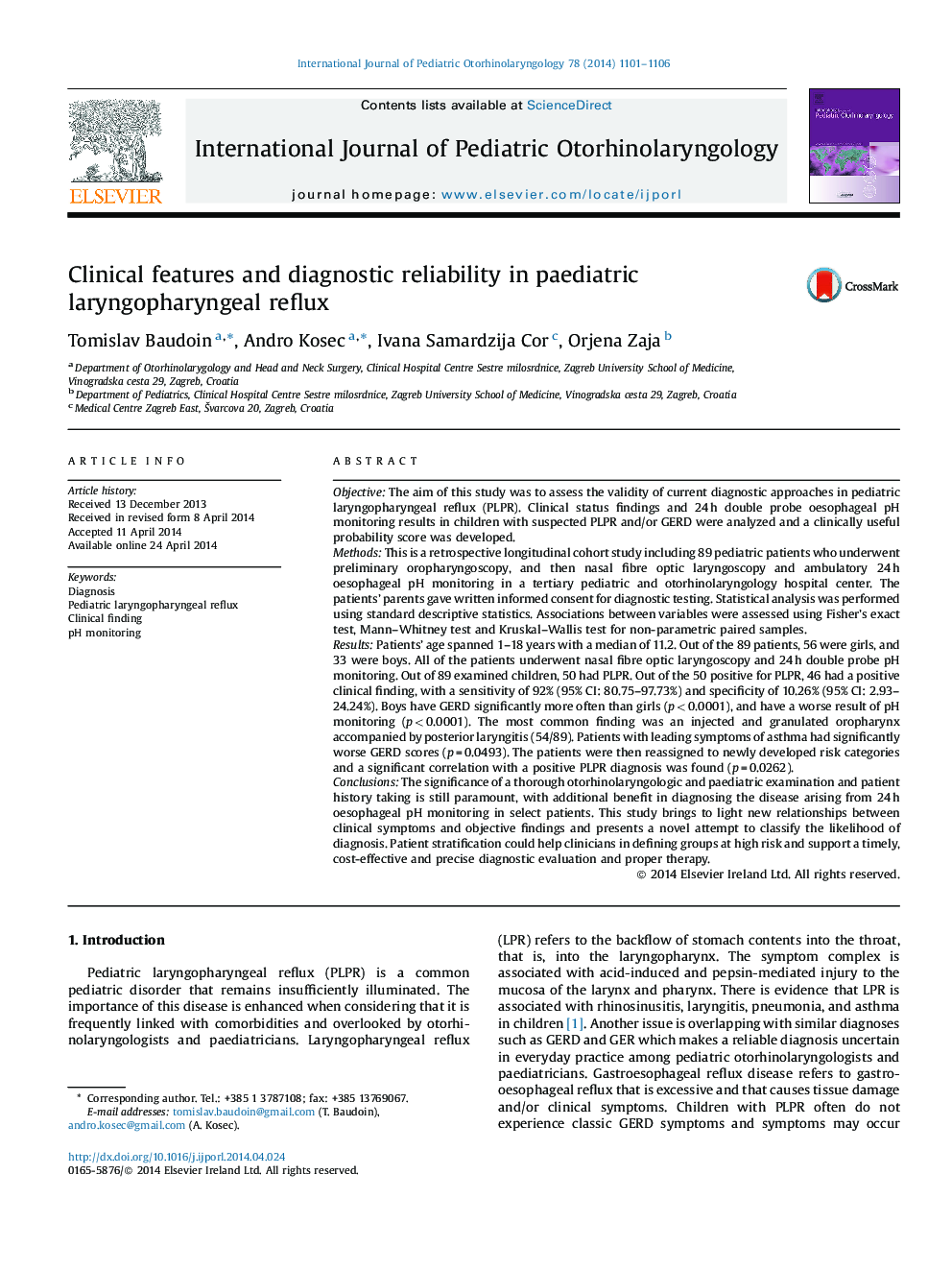| کد مقاله | کد نشریه | سال انتشار | مقاله انگلیسی | نسخه تمام متن |
|---|---|---|---|---|
| 4112572 | 1606006 | 2014 | 6 صفحه PDF | دانلود رایگان |
ObjectiveThe aim of this study was to assess the validity of current diagnostic approaches in pediatric laryngopharyngeal reflux (PLPR). Clinical status findings and 24 h double probe oesophageal pH monitoring results in children with suspected PLPR and/or GERD were analyzed and a clinically useful probability score was developed.MethodsThis is a retrospective longitudinal cohort study including 89 pediatric patients who underwent preliminary oropharyngoscopy, and then nasal fibre optic laryngoscopy and ambulatory 24 h oesophageal pH monitoring in a tertiary pediatric and otorhinolaryngology hospital center. The patients’ parents gave written informed consent for diagnostic testing. Statistical analysis was performed using standard descriptive statistics. Associations between variables were assessed using Fisher’s exact test, Mann–Whitney test and Kruskal–Wallis test for non-parametric paired samples.ResultsPatients’ age spanned 1–18 years with a median of 11.2. Out of the 89 patients, 56 were girls, and 33 were boys. All of the patients underwent nasal fibre optic laryngoscopy and 24 h double probe pH monitoring. Out of 89 examined children, 50 had PLPR. Out of the 50 positive for PLPR, 46 had a positive clinical finding, with a sensitivity of 92% (95% CI: 80.75–97.73%) and specificity of 10.26% (95% CI: 2.93–24.24%). Boys have GERD significantly more often than girls (p < 0.0001), and have a worse result of pH monitoring (p < 0.0001). The most common finding was an injected and granulated oropharynx accompanied by posterior laryngitis (54/89). Patients with leading symptoms of asthma had significantly worse GERD scores (p = 0.0493). The patients were then reassigned to newly developed risk categories and a significant correlation with a positive PLPR diagnosis was found (p = 0.0262).ConclusionsThe significance of a thorough otorhinolaryngologic and paediatric examination and patient history taking is still paramount, with additional benefit in diagnosing the disease arising from 24 h oesophageal pH monitoring in select patients. This study brings to light new relationships between clinical symptoms and objective findings and presents a novel attempt to classify the likelihood of diagnosis. Patient stratification could help clinicians in defining groups at high risk and support a timely, cost-effective and precise diagnostic evaluation and proper therapy.
Journal: International Journal of Pediatric Otorhinolaryngology - Volume 78, Issue 7, July 2014, Pages 1101–1106
